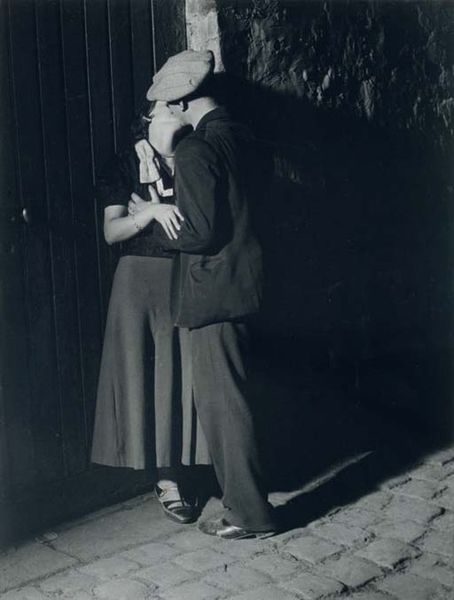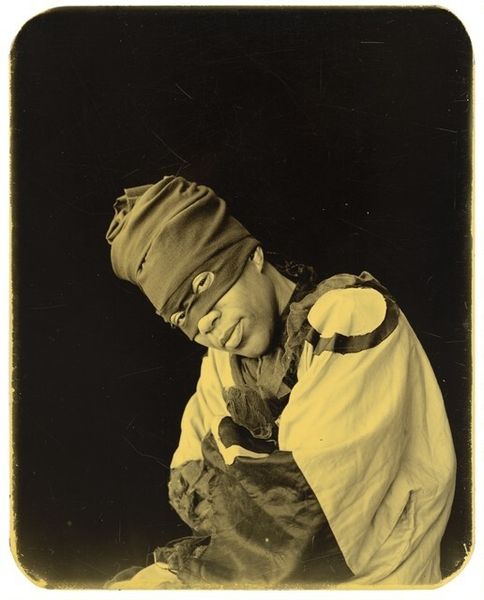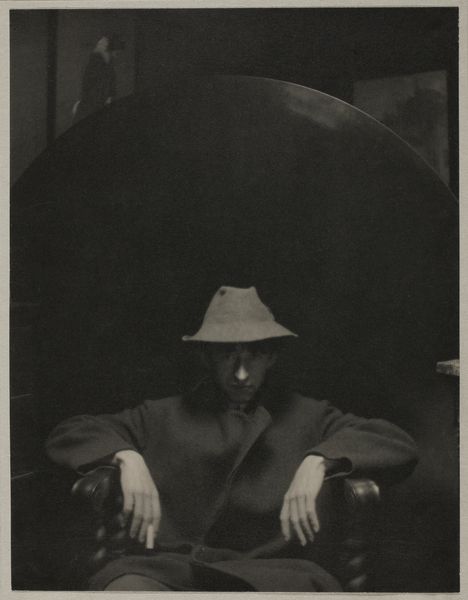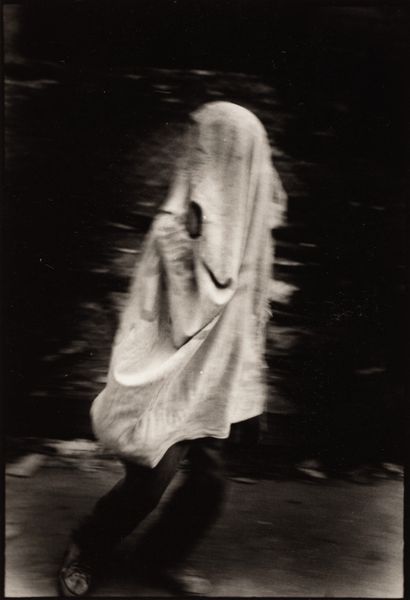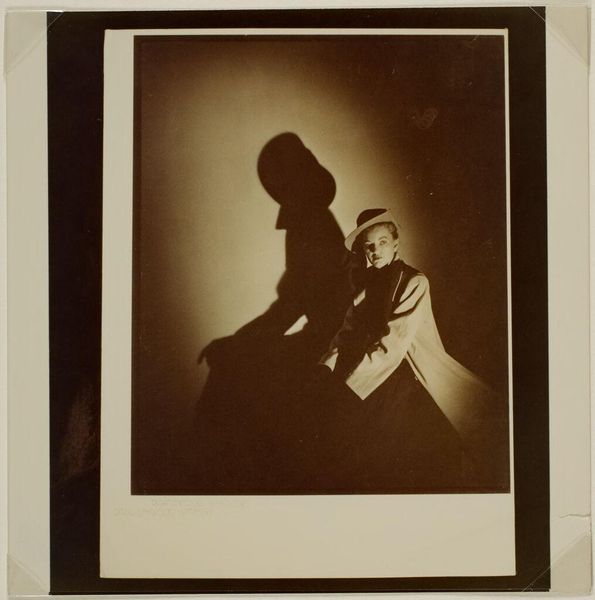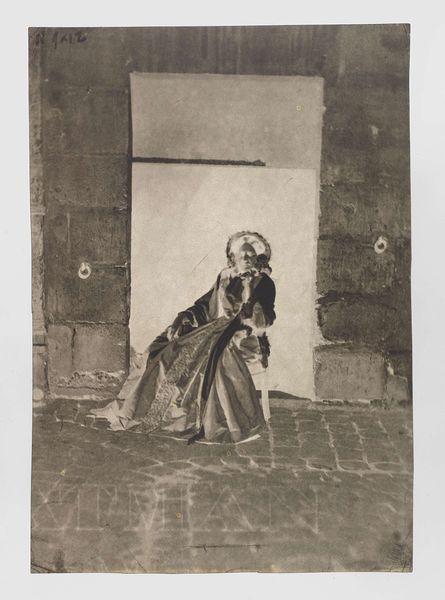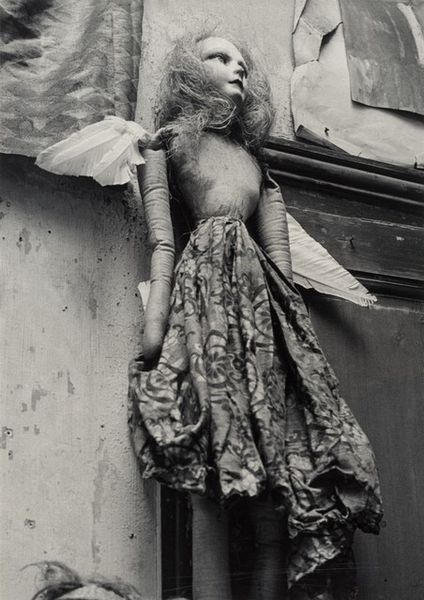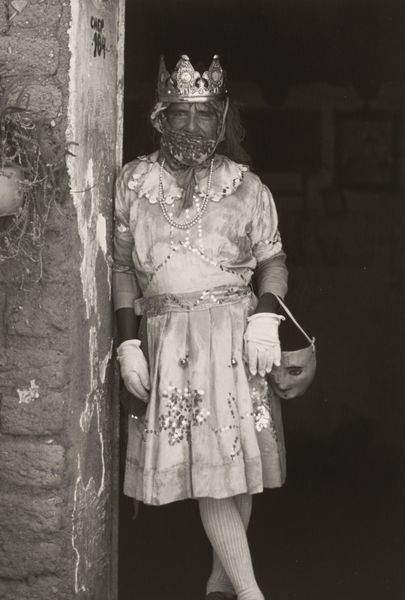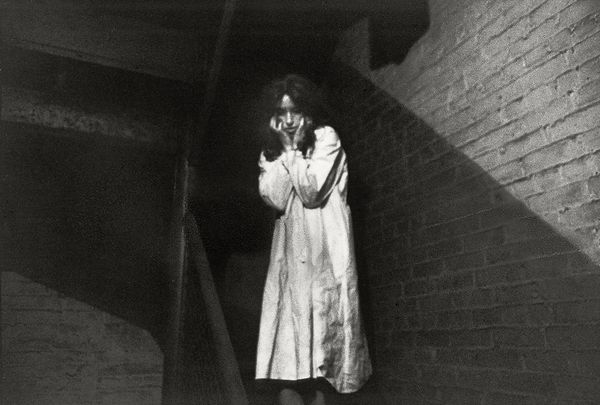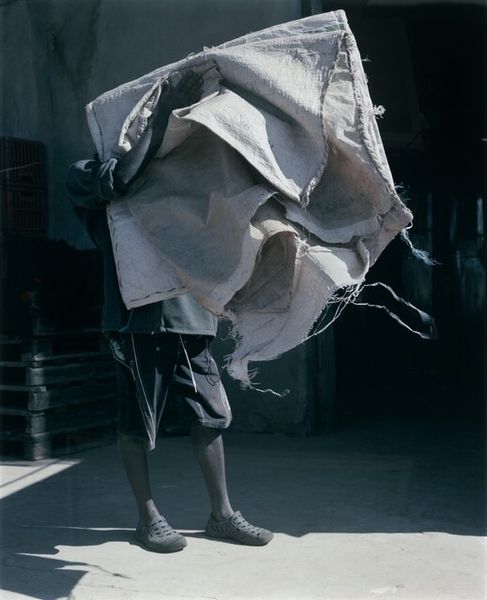
photography, gelatin-silver-print
#
black and white photography
#
landscape
#
street-photography
#
photography
#
gelatin-silver-print
#
monochrome photography
#
monochrome
#
realism
#
monochrome
Dimensions: overall: 23.8 x 20.5 cm (9 3/8 x 8 1/16 in.)
Copyright: National Gallery of Art: CC0 1.0
Curator: Here we have Bill Brandt's gelatin silver print, "Flea Market, Paris," circa 1930. Editor: It’s a stark image. The severe monochrome tones really evoke a feeling of desolation, and the subject matter is equally unsettling; a mannequin posed in a dimly lit setting. It feels very staged. Curator: Staged perhaps, but I would also say it provides an intriguing lens into the interwar years. Notice how the mannequin, frozen in a period-specific dress, is eerily placed amidst discarded goods. What does it mean to display it like this? I would ask what it represents about societal anxieties of the time, anxieties around value, decay and class differences as France struggled with economic recovery and the shadow of impending conflict. Editor: I see it more practically. The high contrast and dramatic lighting might be Brandt experimenting with new photographic papers or darkroom techniques available at the time. The framing feels intentional, almost theatrical. Maybe he was drawn to the texture of the fabrics. Was this staged to create something striking and unique that may elevate its aesthetic value? Curator: It is compelling, that's undeniable. Yet to detach it from its societal context strips the photograph of its real impact. The photograph has much to say about women. Brandt invites us to consider the gendered performance, as this inanimate, manufactured femininity intersects with social class and consumption within an increasingly fragmented world. Editor: Maybe. But you cannot deny the photograph’s compositional balance! The textures, how he has captured them, from the dress’s material to the chipped pavement… that alone creates the mood of decay, independent of social commentary. Curator: A complex piece with a range of potential interpretations; It urges us to confront how material culture mirrors social fault lines, a dialogue perhaps still continuing today. Editor: Absolutely, and to also look closely at what’s actually there, not only how it resonates, but the material qualities and the skill in capturing and rendering it through photographic materials.
Comments
No comments
Be the first to comment and join the conversation on the ultimate creative platform.
